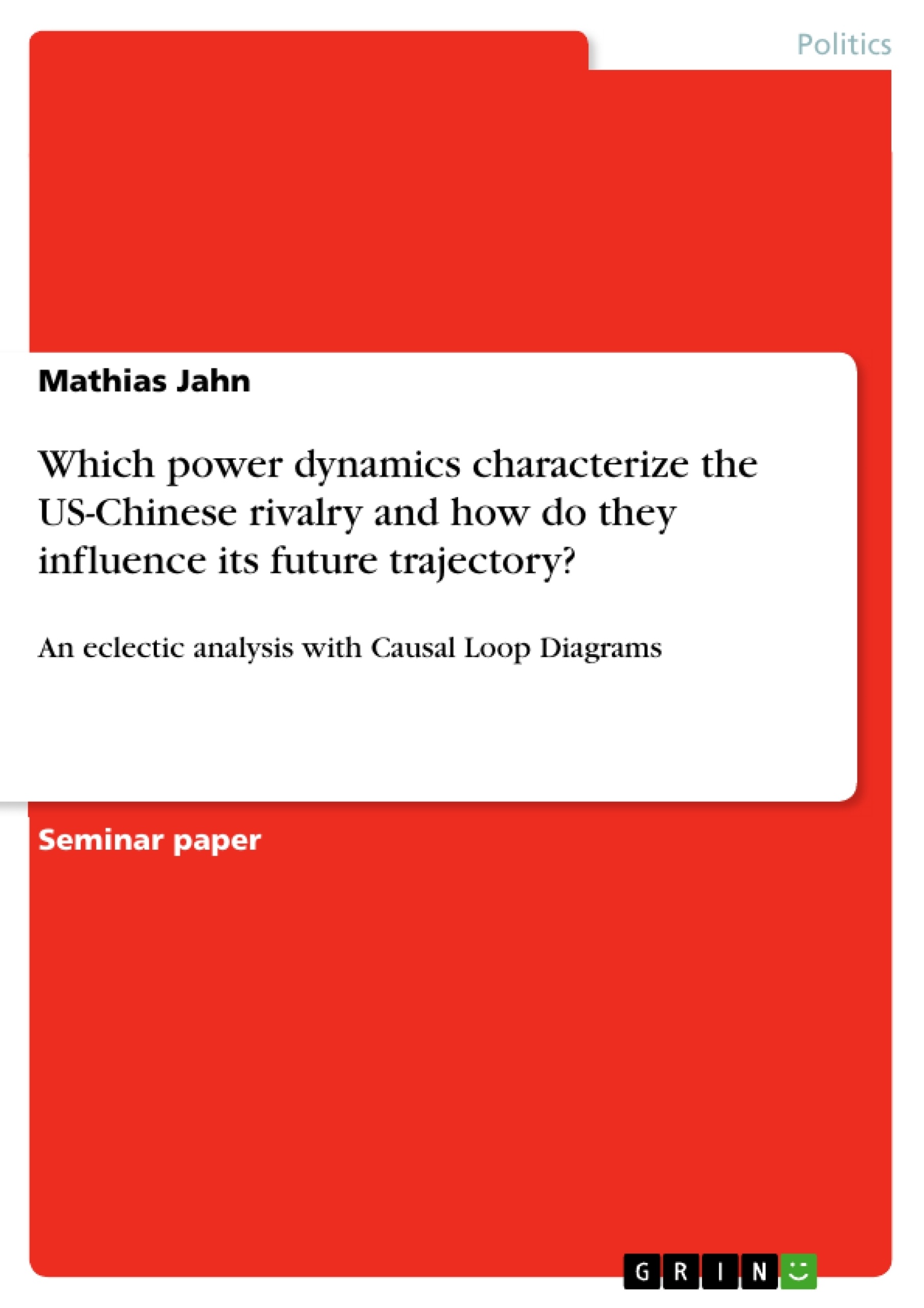The trajectory of rising US-Chinese tensions in the past decade, their future development into an ever-increasing rivalry or potential armed clash is a dominant topic debated in “International Relations Theory (IRT)”. By selecting a particular IRT, analysts determine perceptions and optimistic/pessimistic attitudes regarding state-related interaction patterns. Here, the Western IRT discourse provides hard/soft power analyses which are criticized for a) being too parsimonious and fueling confrontative self-fulfilling prophecies (realism), b) projecting its Western-centric tenets onto a different cultural context leading to interventionism (liberalism), and c) being too optimistic about changing belligerent identities (constructivism). While eclectic approaches try to mitigate these shortfalls, they still omit the extant Chinese IRT, mainly revolving around relational power. In turn, the different Chinese perspectives are equally criticized for a) possessing “little” generalization potential due to their “Sino-centric” nature, b) transporting an “anti-Western” agenda, c) legitimizing China’s “political actions”, and d) assuming a benevolent/ non-confrontative Chinese actor.
Thus, the paper aims to add an eclectic meta-perspective to the debate by bridging the different IRTs with a systems dynamics analysis that translates/integrates the power dynamics into ‘Causal Loop Diagrams (CLDs)’. It does so to offer an informed answer to the research question of which power dynamics characterize the US-Chinese rivalry and how they influence the future trajectory of their relations.
Inhaltsverzeichnis (Table of Contents)
- INTRODUCTION
- THE WESTERN IRT LENS
- Realism
- Liberalism
- Constructivism
- THE CHINESE IRT LENS
- ASSESSMENT OF THE OVERALL SYSTEM DYNAMICS
- CONCLUSION
Zielsetzung und Themenschwerpunkte (Objectives and Key Themes)
The paper analyzes the ongoing US-Chinese rivalry by bridging Western and Chinese International Relations Theory (IRT) frameworks through a systems dynamics approach using Causal Loop Diagrams (CLDs). The study aims to identify the key power dynamics characterizing this rivalry and understand how they influence its future trajectory. It focuses on the potential for a confrontational escalation driven by a "precedence dilemma" which hinders the development of trustful and intimate interactions between the two powers.
- Power Transition Theory and the Security Dilemma
- The role of hard and soft power in the US-Chinese rivalry
- The significance of relational power and its limitations
- The impact of the "precedence dilemma" on future relations
- The potential risks of escalation for both countries' national security
Zusammenfassung der Kapitel (Chapter Summaries)
- Introduction: The chapter introduces the context of the US-Chinese rivalry, highlighting the dominance of Western International Relations Theory (IRT) and its limitations, as well as the significance of integrating Chinese perspectives. The paper aims to provide an eclectic meta-perspective by utilizing a systems dynamics analysis with Causal Loop Diagrams (CLDs).
- The Western IRT Lens: This chapter examines the main power dynamics from the perspectives of realism, liberalism, and constructivism within the Western IRT framework. It focuses on the Power Transition Theory (PPT), the Security Dilemma (SD), and the Stability-Instability Paradox (SIP) as key concepts for understanding the rivalry.
- The Chinese IRT Lens: The chapter explores Chinese perspectives on the US-Chinese rivalry, emphasizing the concept of relational power and the importance of understanding China's grand strategy of "great rejuvenation."
- Assessment of the Overall System Dynamics: This chapter consolidates the insights from both Western and Chinese perspectives and utilizes Causal Loop Diagrams (CLDs) to visualize the complex interplay of power dynamics in the US-Chinese rivalry.
Schlüsselwörter (Keywords)
The primary focus of the paper lies on the power dynamics characterizing the US-Chinese rivalry. Key terms and concepts include: International Relations Theory (IRT), Realism, Liberalism, Constructivism, Power Transition Theory, Security Dilemma, Stability-Instability Paradox, Relational Power, Causal Loop Diagrams (CLDs), Hard Power, Soft Power, Escalation Dynamics, and the "precedence dilemma."
- Quote paper
- Dr. phil. Mathias Jahn (Author), 2023, Which power dynamics characterize the US-Chinese rivalry and how do they influence its future trajectory?, Munich, GRIN Verlag, https://www.grin.com/document/1359674



